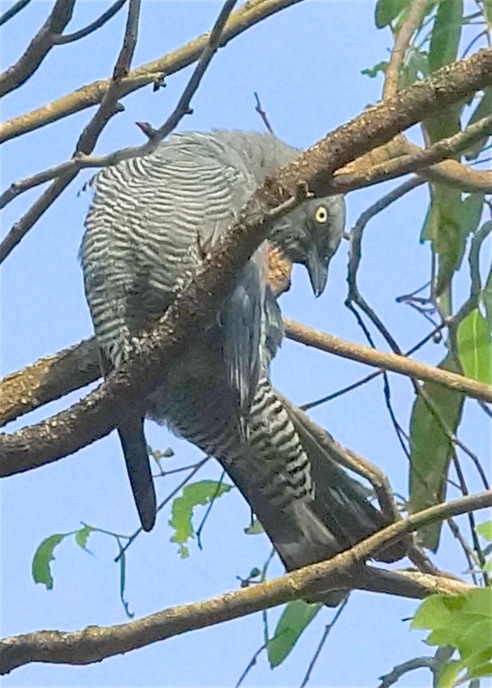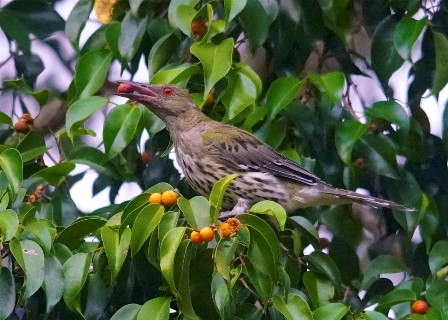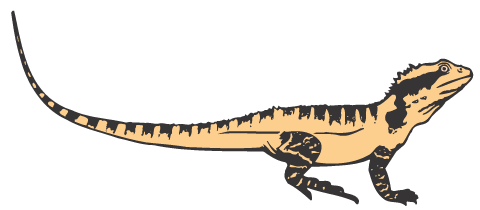Our native Moreton Bay Fig (Ficus macrophylla) makes a wonderful habitat and is one of the best food resources for a large number of birds, insects and flying foxes.
We have a number of them, but one, deep in an area of native bush, has not been touched since it was logged for Red Cedar about 100 years ago.
It is a beauty! It has a huge crop of fruit, usually in February, and another crop in winter.
This tree started life as a seed deposited by a bird on a tree the loggers probably didn’t want. The dead tree is still visible. It was a Eucalyptus about 80cm in diameter at its base. The fig seedling grew up and strangled the Eucalyptus and now the Moreton Bay Fig has a massive buttress and at chest height it is more than a metre through and more than 30 metres tall. It has a huge canopy and stands well clear of the other trees.
The Fig attracts masses of flying foxes that come in at dusk and feed noisily right through the night. During the day the birds take over and the range is impressive.
Most interesting to me and my birder friends is a pair of the rarely seen Barred Cuckoo-shrikes that come in to feed on the fruit. They quickly feed on a number of the orange fruit and then move to a horizontal branch on a nearby tree where they sit quietly while they digest their meal. That takes about 25 minutes and they return to the Fig for another feed.

They are joined by lots of Figbirds, Orioles, Rose-crowned Fruit Doves, Currawongs and Lewin’s Honeyeaters. Sometimes a flock of Topknot Pigeons comes in and also the odd Bowerbird.
Underneath the fig, Emerald Doves, Wonga Pigeons and Brush Turkeys pick up the figs dropped by the birds above them.
Even when the Fig is not fruiting it provides a safe habitat for a lot of small birds including Superb Fairy-wrens, Spectacled Monarchs and Willie Wagtails. Possums also play in its branches.
The figs have an interesting pollination method involving Fig Wasps and there are a few moth caterpillars and a Longhorn Beetle found on the foliage.

Olive-backed Oriole eating Moreton Bay Fig

